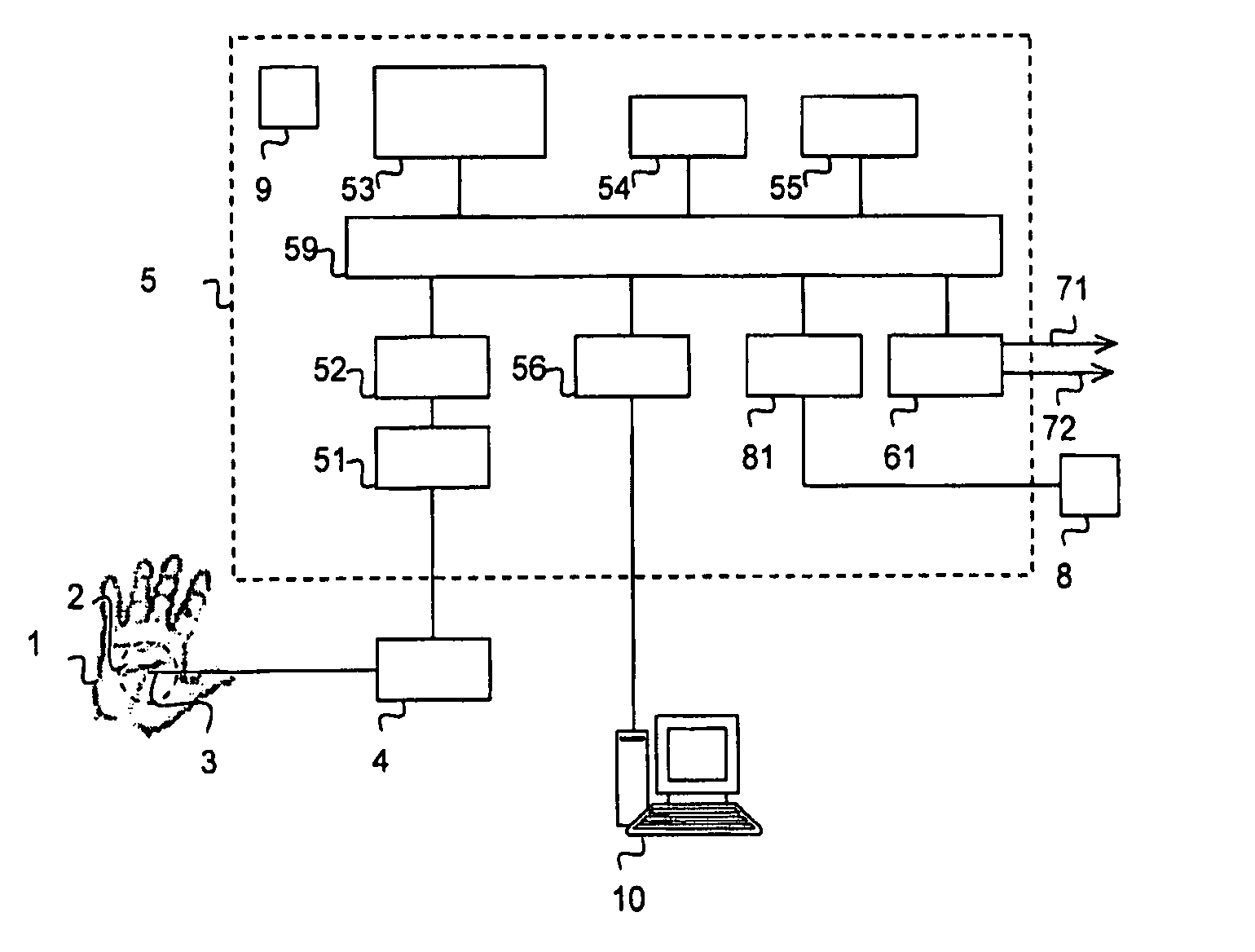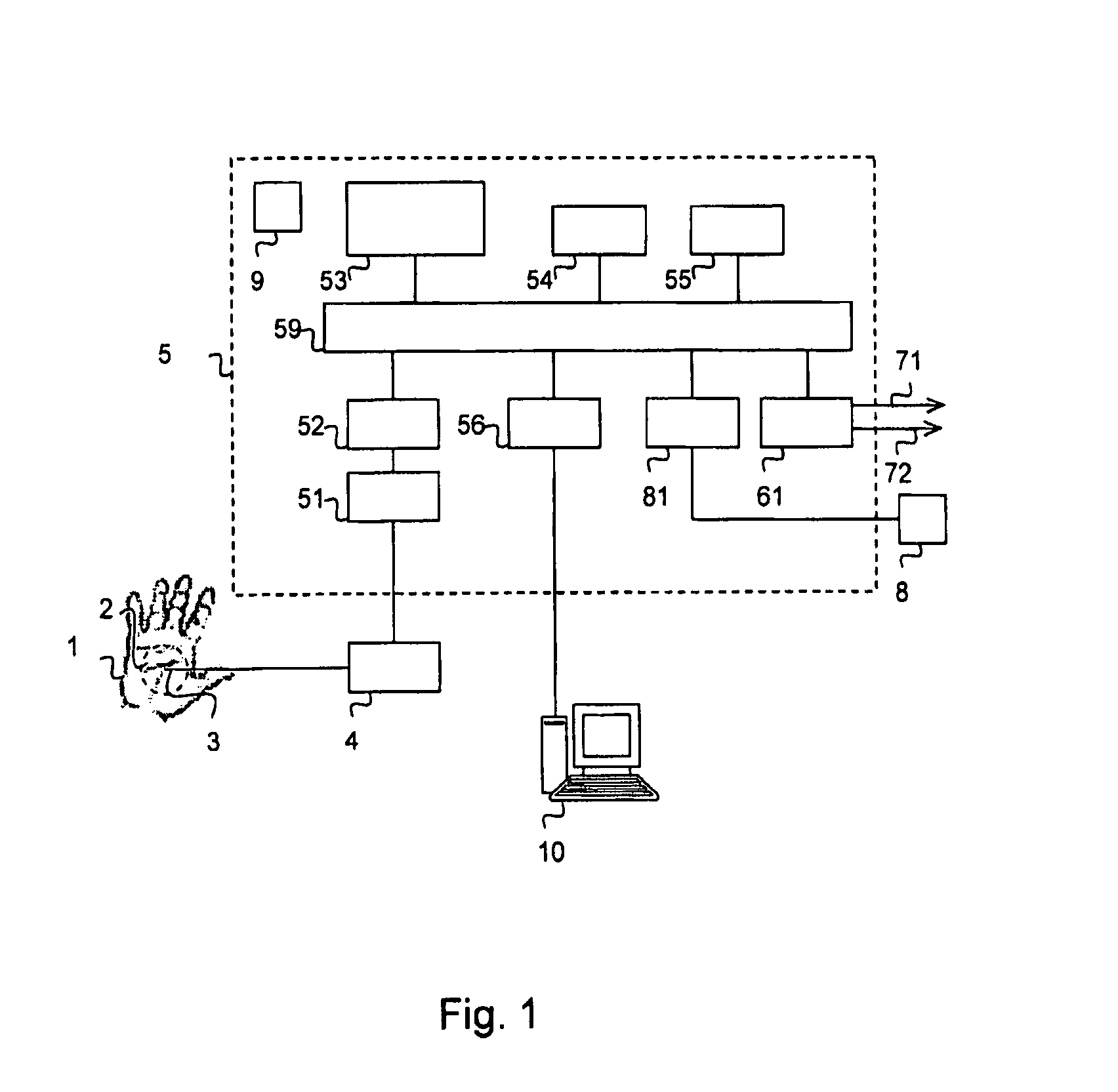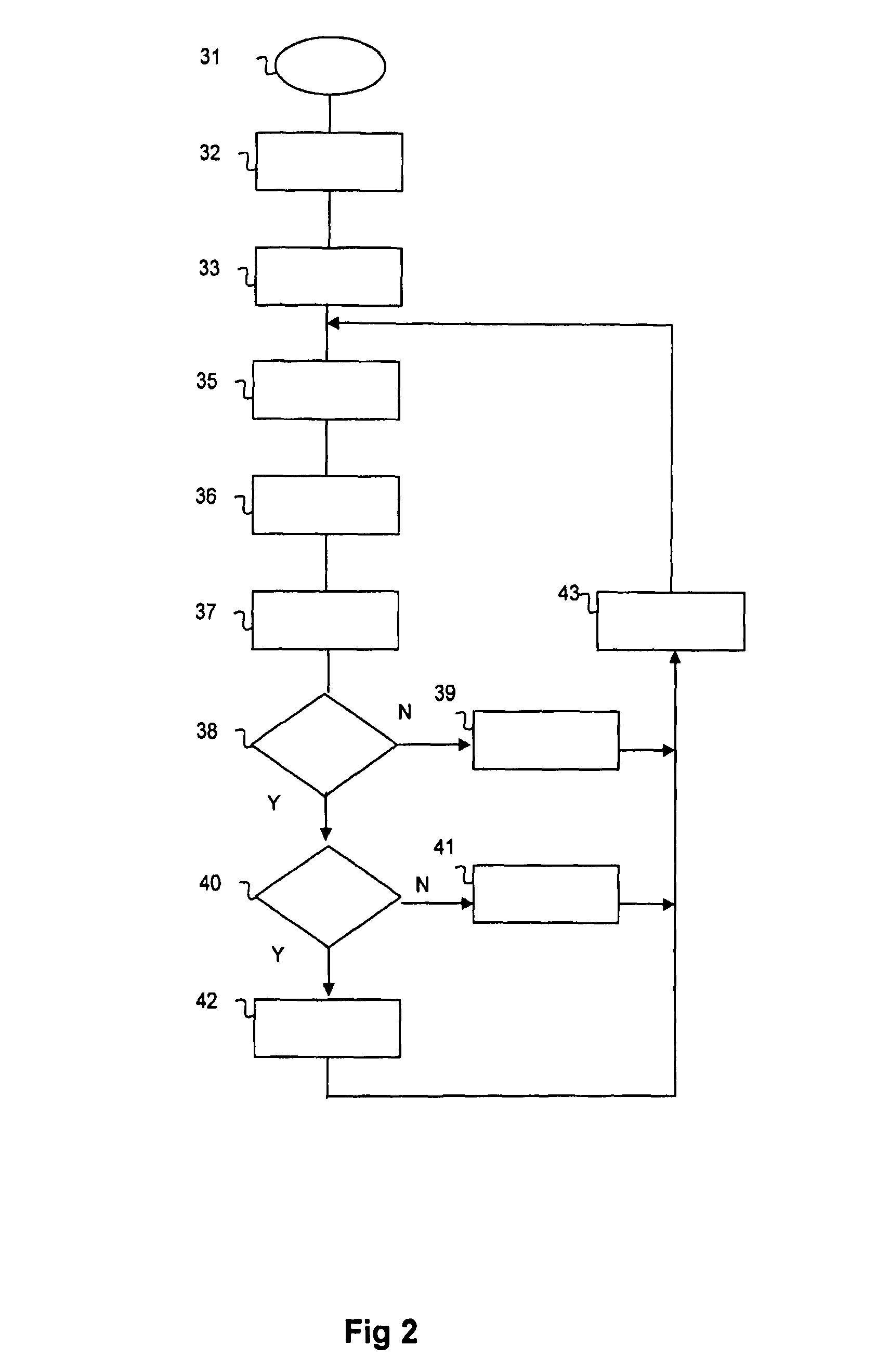Method and apparatus for monitoring the autonomous nervous system of a sedated patient
a technology of autonomous nervous system and monitoring method, applied in the field of medical technology, can solve the problems of prior art solution not providing indications of pain/discomfort and awakening simultaneously, and does not provide an indication of lack of hypnotics due to awakening
- Summary
- Abstract
- Description
- Claims
- Application Information
AI Technical Summary
Benefits of technology
Problems solved by technology
Method used
Image
Examples
Embodiment Construction
[0023]FIG. 1 illustrates a block diagram for a preferred embodiment of an apparatus according to the invention. The apparatus is particularly arranged for the simultaneous detection of pain / discomfort reaction and awakening in a sedated patient. On an area 2 of the skin on a body part 1 of the patient, sensor means 3 are placed for measuring the skin's conductance. The body part 1 is preferably a hand or a foot, and the area 2 of the skin on the body part 1 is preferably the palmar side of the hand (in the palm of the hand) or the plantar side of the foot (under the sole of the foot). The sensor means 3 comprise contact electrodes where at least two electrodes are placed on the skin area 2. In a preferred embodiment the sensor means 3 consist of three electrodes: a signal electrode, a measuring electrode and a reference voltage electrode, which ensures a constant application of voltage over the stratum corneum (the surface layer of the skin) under the measuring electrode. The measur...
PUM
 Login to View More
Login to View More Abstract
Description
Claims
Application Information
 Login to View More
Login to View More - R&D
- Intellectual Property
- Life Sciences
- Materials
- Tech Scout
- Unparalleled Data Quality
- Higher Quality Content
- 60% Fewer Hallucinations
Browse by: Latest US Patents, China's latest patents, Technical Efficacy Thesaurus, Application Domain, Technology Topic, Popular Technical Reports.
© 2025 PatSnap. All rights reserved.Legal|Privacy policy|Modern Slavery Act Transparency Statement|Sitemap|About US| Contact US: help@patsnap.com



